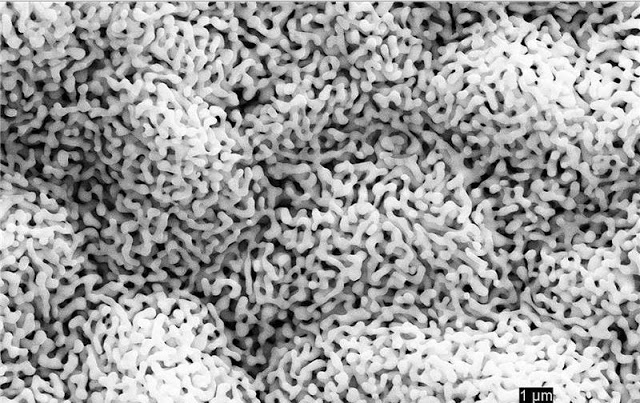

| Online: | |
| Visits: | |
| Stories: |

| Story Views | |
| Now: | |
| Last Hour: | |
| Last 24 Hours: | |
| Total: | |
Better Visibility When Driving at Night with Gold Nanosponges
In order to be able to control each point of light independently a gold nano-sponge establishes the contact between each individual pixels and the driver chip. The nanoporous gold structure compresses like a real sponge and can be precisely adapted to the topography of the component.
Researchers at the Fraunhofer Institute for Reliability and Microintegration IZM in Berlin have collaborated with Infineon, Osram, Hella and Daimler in the composite project μAFS to develop an adaptive front lighting system: “We have been able to solidly connect four LED chips having 256 pixel each with the driver electronics chip. Due to this high resolution, we can control the light distribution to the smallest detail,” explains Dr. Hermann Oppermann, Group Manager in the Department of Wafer Level System Integration at the IZM.
The experts from the IZM were responsible in the project for establishing contact between the individual pixels and the driver chip in order to be able to control each point of light independently. With a pixel size of only 125 microns, that is not an easy task: „The connections have to be sturdy, and we need good thermal contact to ensure sufficient cooling of the chip,“ Oppermann explains.
This is because previous solutions have drawbacks: LED lighting systems are relatively large and expensive: one LED is needed for each point of light. Today, up to 80 individual LEDs are commonly interconnected to form a system. In order to produce a coherent beam of light on the road, though, every LED has to have its own, precisely aligned optics.
Project partner µAFS
The abbreviation stands for integrated μ-structured light-emitting diodes as intelligent light sources for novel adaptive headlight systems. The German Federal Ministry of Education and Research (BMBF) is funding the project in the field of “Integrated Microphotonics.”
The partners:
Daimler AG
Hella KGaA Hueck & Co.
Infineon Technologies AG
Osram GmbH
Osram Opto Semiconductors GmbH
Fraunhofer Institute for Applied Solid
State Physics IAF, Freiburg
Fraunhofer Institute for Reliability and
Microintegration IZM, Berlin
Contacts and sources:
Fraunhofer IZM, Wafer Level System Integration Department
Source: http://www.ineffableisland.com/2016/03/better-visibility-when-driving-at-night.html



